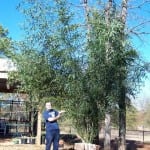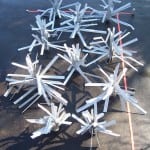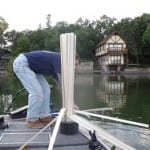
The Missouri Department of Conservation began a project last week to increase fishing opportunities on Lake Taneycomo.
On Friday, the department began placing fish habitats in the upper mile of the lake.
A press release said periods of heavy hydropower generation below the dam leaves “trout vulnerable to swift currents and (limits) fishing access for wade and bank fishermen.”
Newly installed structures in the lake will include boulder clusters, which should provide trout areas to rest and feed and provide anglers with more accessible fish habitats during periods of generation.
The project will be in conjuction with a drawdown of Lake Taneycomo requested by Empire District Electric Co., which will enable improvements to be constructed on Powersite Dam.
The department “plans to utilize this drawdown period to use large equipment near the lake to place the boulder clusters,” the release said.
Conservation officials will be at the project site to monitor the work and answer any questions from the public.
The department will use machinery to move the boulders into place, however, fishing will still be permitted in areas near where the work is being done.
The project is expected to conclude by the following Friday, Nov. 4.
The project is part of the Table Rock Lake National Fish Habitat Initiative, which is designed to maintain and improve fish habitats in Table Rock Lake and Lake Taneycomo.
This project is a joint effort of the Missouri Department of Conservation, the National Fish and Wildlife Foundation, Bass Pro Shops, the U.S. Army Corps of Engineers and other organizations.
It is designed to be a pilot project for a broader national program focused on habitat protection and restoration in reservoirs throughout the country.Tyler Francke
Visit mdc.mo.gov for more information on Missouri fishing.
See the dozens of unique artificial fish habitat models, fish attractors and fish cover used at fishiding.com, the industry leader and only science based, man made and artificial fish habitat, proven to provide all fish with cover they prefer to prosper.




































